-
 Health & Wellness
Health & WellnessUnsavory Details of Holding Your Urine: Why You Shouldn’t Ignore Nature’s Call
In our hustle culture, it’s far too easy to put off a visit to the bathroom. Whether out of a long meeting or a busy movie, or just from being too lazy to get up, many of us have no problem keeping our urine in. Ignoring the urge to pee may seem harmless on certain occasions, but consistently holding in your bodily fluids can lead to long-term health issues. From the risk of permanent bladder damageto other problems, the negative side effects of repeatedly holding it in are actually a lot more serious than you may think. -
 Health & Wellness
Health & WellnessCommon Visual Problems You Should Take Steps to Prevent
Our delicate eyes, when compared to the often overlooked limbs, are one of the most important organs that let us see the world in great detail. But numerous factors such as genetics, aging, environmental factors, or even just basic habits can lead to various vision related issues. Being aware of these conditions and taking preventive measures can contribute to healthy eyesight andminimize long-term damage. The most typical vision problems refractive errors, age-related problems, and digital eye strain require a different type of prevention and eye care services. -
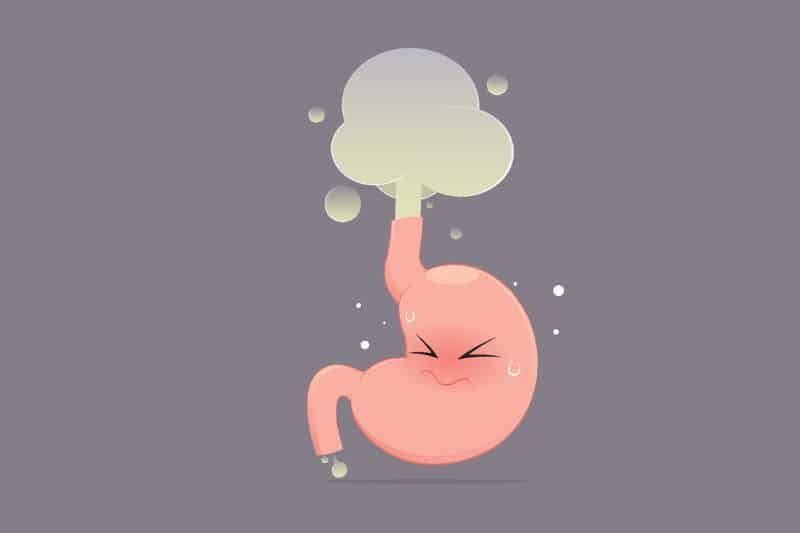 Health & Wellness
Health & WellnessWhy Do I Fart So Much? Understanding Excessive Flatulence
Farting (quiet honestly we cannot believewe are actually discussing this) or flatulence is a completely natural bodily process. In reality, the average person breaks wind anywhere from 13 to 21 times per day. But if you're farting more often than is really convenient for you, you might wonder what's causing it and whether it's a symptom of a larger problem. Gas can certainly beembarrassing and uncomfortable, but in almost all cases, it's not cause for serious medical concern. Many factors, from what you eat to the state of your digestive health, can contribute to increased gas production. Getting to the bottom of what's behind these “gassers”can help you keep it under control, or even prevent it. -
 Health & Wellness
Health & WellnessUnderstanding Excessive Hand Sweating: Causes, Symptoms and Solutions
You may be surprised to learn that palmar hyperhidrosis is a relatively common condition, about 1-3% of people have it. Sweating, of course, is a natural and necessary function of the body, which works to cool us down, but people with hyperhidrosis produce much more sweat than the body requires for thermoregulation to be considered normal. This disorder can occur at any age, is see in childhood or adolescence, and can be lifelong if not treated. The negative effects of chronically clammy palms reach beyond mere discomfort, often manifesting in severe social anxiety and professional obstacles for sufferers. -
 Health & Wellness
Health & WellnessThings to Do About Darkened Joints: Causes and Solutions
For most people, darkened joints, also known as hyperpigmentation around the joints, can be quite an alarming problem. Whether it's on your knees, elbows, ankles or knuckles, this discoloration can result from a range of factors including friction, hormonal changes, skin conditions or health concerns. Although most darkened joints are relatively benign, occasionally they may be a sign of some underlying disorder, or just be cosmetically disfiguring. A knowledge of what causes itand some effective treatment options can restore even skin tone and confidence. -
 Health & Wellness
Health & WellnessWhat to Do About Bleeding Gums
Bleeding gums, of course, can be a situation that worries us a lot, which may indicate the potential health issues that we have not discovered. It might be not too serious at first, but the ignorance of it can finally lead to your severe problems of your oral health. It is important to understand the causes of the sulphur-like taste and take appropriate measures for oral hygiene and health in general.1.Understanding the CausesThe main reason causes your gums to bleed is gingivitis which is an early teeth disease caused by the accumulation of plaque. Plaque is a film of bacteria which will stick to your teeth when you misuse the toothbrush and dental floss. If it is not cleaned in time, it will harden into tartar and excites your gums to inflammation and bleeding. Other reasons that cause bleeding gums include the changes of hormone, lack of vitamins (especially vitamin C and K), medicines and systemic diseases. Smoking and a poor diet can also contribute tothe problem.2.Improving Oral HygieneOne of the most efficient ways to cure bleeding gums is by oral hygiene. You ought to brush your teeth two times by using soft-bristled toothbrush and fluoride toothpaste.Be firm, but gentle — make sure to brush up along the gumline, where plaque accumulates. Daily flossing is just as essential since it removes food debris and plaque that a toothbrush can never get to between teeth. If you have difficulty traditional flossing, you might find a water flossor interdental brushes helpful. You also can add an antiseptic mouthwash to your routine to fight bacteria and soothe inflamed gums.3.Seeking Professional HelpIf you start to notice bloodshed when you’re brushing, and these issues aren’t improving with better oral hygiene, it’s time to see a dentist. A dentist can do a deep cleaning to get rid of the tartar buildup and indicate how serious your gum problem is. They might also suggest treatments like scaling and root planing, a deep-cleaning method that eliminates plaque and tartar from under the gumline. For more severe cases of gum disease, surgery may be required. To prevent and manage gum problems, regular dental check-ups, every six months if possible, are essential.4.Diagnosing and Treating Root Causes of IllnessWith bleeding gums, sometimes that indicates other health issues. If you suspect a vitamin has a deficit you should consult your health care provider to ascertain whether supplements or dietary changes are appropriate. In the case of a systemic condition such as diabetes, blood glucose levels need to be carefully managed due to the adverse effect of elevated glucose levels on gum disease. If medications are part of the problem, your doctor may change or reduce your prescription or recommend alternatives. Quitting smoking and consuming a balanced diet that includes plenty of fruits, vegetables, and whole grains can also greatly benefit gum health.5.Lifestyle AdjustmentsThere are certain lifestyle changes you can make that can complement gum health as well. It helps reduce stress, which can lower the immune system and worsen inflammation. Staying hydrating helps maintain saliva levels, which naturally cleanses the mouth and neutralizes harmful acid. Steering clear of sugary and acidic meals can halt dates with plaque buildup and enamel erosion, two of the biggest culprits.In brief, bleeding gums should never be ignored as they can indicate a need for better oral care or a visit to a dental professional. Gum bleeding is urgent but can be prevented if you improve your daily habits and hygiene techniques, visit a dentist, or treat underlying health conditions and lifestyle choices. So make sure to catch it early for a healthy mouth, and this will lead to a healthy body, so until next time, brush up on your oral health. -
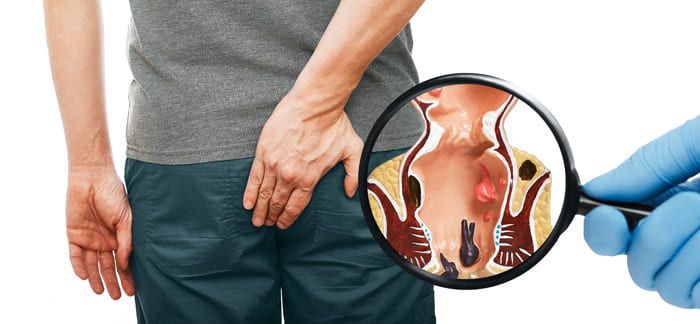 Health & Wellness
Health & WellnessWhat Causes External Hemorrhoids?
Millions of people around the globe suffer from external hemorrhoids, which are a common and often painful condition. They happen when the veins near the anus or lower rectum become enlarged and inflamed. External hemorrhoids, by contrast, don’t grow inside the rectum, butrather under the skin around the anus.Knowing what causes external hemorrhoids may assist in their prevention and appropriate management. Their rising progression is caused by many reasons are the diet habits, the lifestyle and the medical issues.1.Difficulty in Having aNormal Bowel MovementOne of the biggest causes of external hemorrhoids is excessivestraining during bowel movements. This is one word that is most often when some having constipation or difficultdefecation.Increased pressure is put on the veins around the rectal area, which causes them toswell and be inflamed. Chronic constipation, which makes you strain over and over again, is a significant risk factor for external hemorrhoids.2.Poor Dietary HabitsAnother contributing factors of external hemorrhoids is a low-fiber diet. Fiber makes stools soft and bulky, a configuration that’s much easier to pass. When there isn’t enough fiber, stools are hard and dry, resulting in constipation and straining. Not drinking enough water can make it worse, we need to be hydrated in order to keep stools soft and constipation at bay.3.Prolonged Sitting or StandingWhen people sit or stand for long periods, extra pressure is put on the veins in the rectal area whichcan lead to the formation of external hemorrhoids. Those of us with sedentary jobsor sitting on the toilet for extended periods of time are at greater risk. Likewise, standing for an extended period also worsens the condition by even more pressure into the lower rectal veins.4.ObesityOverweight or obesity is another leading risk factor of external hemorrhoids. Extra body weight exerts pressure on the pelvic and rectal veins, causing them to be more prone to the swelling and inflammation that they become subjected to with pregnancy and childbirth. Finally, obesity often goes hand in hand with a sedentary lifestyle and unhealthy eating habits which alsopredispose you to hemorrhoids.5.Pregnancy and ChildbirthExternal hemorrhoids are most often common during pregnancy in women. The enlarged uteruscompresses the pelvic veins and contributes to the swelling and inflammation of the veins around the anus. Hormonal changes in pregnancy also weaken the veins, which makes them more prone to hemorrhoids. The pressure that occurs in childbirth may aggravate an existing condition or create new hemorrhoids.6.AgingAge causes the tissues of the rectal area and theveins in it to become progressively weaker, which makes them more vulnerable to swelling and inflammation. That’s why external hemorrhoids are more likely in older adults. In elderly people, hemorrhoids are more common due to the aging tissues losing their connectivity and structural support, further compounded by a sedentary lifestyle and reduced defense against constipation.7.Genetic PredispositionAlthough somepeople might have a tendency to get hemorrhoids due to genetics. A person may be more prone to suffer from hemorrhoid if there is a family history of it being passed down through generations, between the weaknesses inherited in the veins or connective tissues in the rectal region.To conclude, straining during bowel movement, poor diet, prolonged sittingor standing, obesity, pregnancy, agingand familial predispositionare contributory factors to this painful and often debilitating condition — external hemorrhoids. Becoming aware of these possible causes can enable people to stage prevention, such as following a high-fiber diet, taking ample hydration, rambling usually and not putting pressure on a chair for a lengthy time period or undertaking difficult lifting. In case of persistent or worsening symptoms, medical consultation for the correct diagnosis and treatmentis necessary. Eradicating the underlying risk factors can lower the likelihood that one would develop external hemorrhoids, and even make life easier in general. -
 Health & Wellness
Health & WellnessUnpleasant Effects of Chronic Hives
Chronic hives, or chronic urticaria, are itchy, red welts or swelling that come and go for six weeks or longer. And while the physical manifestations may be the most visible, the effects of chronic hives go well beyond the body.This type of disorder can have a deep impact on an individual; affecting emotional well being, daily activities and the quality of life in general.Here’s a few of the negative thoughts and challenges that chronic hives present.1.Continuous Itchingand PainThe most immediate, and obvious, consequence of chronic hives is the incessant itching and discomfort. The welts may occur anywhere on the body, and the itching can vary from mild to severe. This persistent nuisance can distract from routine tasks, sleep or even relax. The itching can become intense enough to lead to scratching, which further irritates the condition, damaging the skin or leading to infections.2.Shameand Self-denialChronic hives can be very visible, particularly if they are located on the face, neck or arms. With this visibility comes embarrassment, and self-consciousness.Chronic hives-related stigma or pressure from people that do not know about it may only worsen the condition. This can lead to social withdrawal, as individuals experiencing this disorder avoid the public or gather with friends and family in an effort to avoid the attention and questioning they receive about their skin.3.Anxiety and StressThe ongoing concern of when the next serious flare up will be can cause increased anxiety and stress. Those with chronic hives can become hyperattentive to their skin, looking out for the next welts or swelling. This fear is exacerbated by the possibility that a person could suffer a severe allergy-reaction, such as angioedema (swelling that occurs beneath the surface of the skin), which can be both agonizing and in some cases life-threatening — if it involves the throat or airways.4.Impact on Daily ActivitiesSuch chronic hives tend to be debilitating enough to affect regular activities and daily responsibilities. The itchiness and discomfort can make it difficult to concentrate at work or school, and the raised bumps can reduce confidence in social or professional situations. The individual with chronic hives may even have to leave work or avoid certain activities altogether, both of which can lead to feelings of isolation or frustration.5.Emotional TollChronic hives can take a toll on a person emotionally as well, and this should not be discounted. Having a chronic condition which can alter how you look and feel can leave you feeling sad, frustrated and depressed. Dealing with laxatives in restroom stalls or unkind words is difficult enough, but the symptoms themselves are also fighting every day and with it comes a lot of feeling like they never get a sense or freedom from their bodies because others don't understand what they are going through. This constant emotional bombardment can wear away at relationships, harm self-esteem, and impact mental health over time.6.Impact on RelationshipsChronic hives can affect relationships with family members, friends and romantic partners as well. It is hardly possible to lead a social life and to console oneself positively with an ongoing burden on your feelings. Family and friends may find it hard to get what living with chronic hives is like, resulting in miscommunication or even frustration on both sides.Chronic hives is not simply a skin disease; rather, it is a complex and multilayered issue that can have an effect on every aspect of someone's life. Each cause brings about a physical reaction, such as sweating and a racing heart; it adds an emotional weight to one's life that can feel heavy; and it alters social relationships, which is hard to deal with. But it is important to remember that there is help out there. Healthcare providers, support groups and other people willing to talk about what they know of the condition can be incredibly helpful. Although chronic hives is a lifetime fight, there are ways to get through the condition better. -
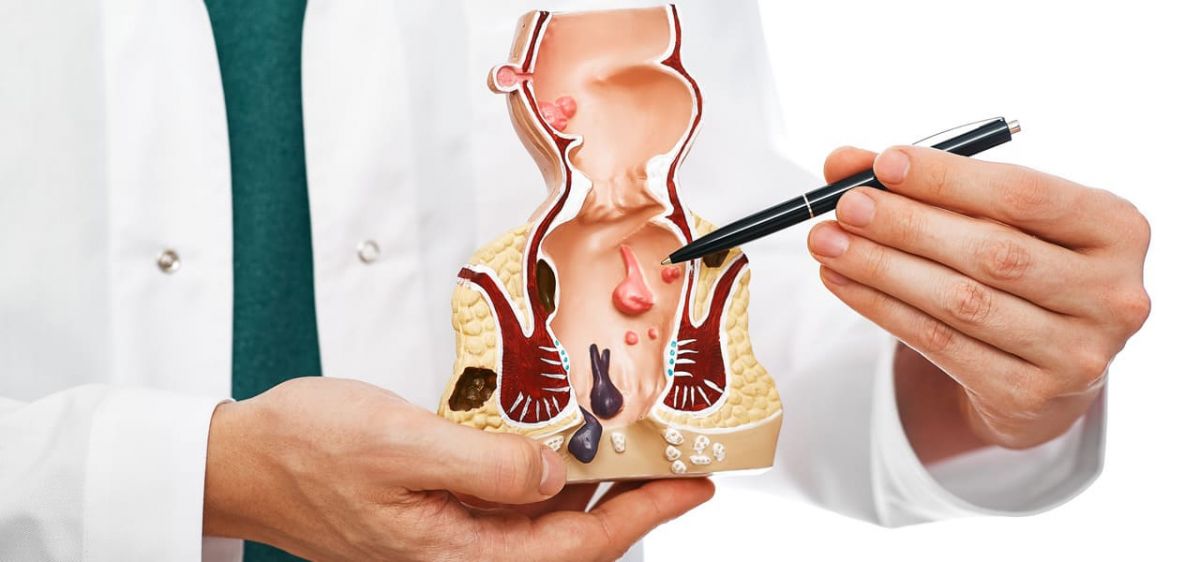 Health & Wellness
Health & WellnessTreatment Options for External Hemorrhoids
Hemorrhoids, while fairly common and usually treatable with a number of options that vary in severity, can be both highly annoying aswell as painful that the likes of using a cream can seem too little to go beyond when suffering from the condition. These swollen blood vessels around the anus can cause itching, discomfort, and bleeding; however, the right approach can reduce symptoms and help manage the condition. The treatment usually ranges from lifestyle changes and home remedies to medical surgery, depending on how serious the symptoms.1.Home and Lifestyle Remedies for SymptomsWe cantreat this condition first with lifestyle changes and home remedies. These steps are usually enough to relieve mild to moderate symptoms. Dietary fiber is one of the most effective management strategies for hemorrhoids. High-fiber diet dissolves the stool and help makes it drier to come out, you do not give so much strain in the bowel and that is one of the key reasons for the flare-ups of the hemorrhoids. It is best to incorporate more high-fiber foodssuch as fruits, vegetables, whole grains, and legumes into your daily meals. Consuming lots of water can also help ease bowel and soften stool and prevent constipation as well as help with regular digestion.2.Over-the-counter TreatmentsPeople can also useOTC options for external hemorrhoids. Topical creams, ointments and suppositories that include active ingredients like hydrocortisone or witch hazel can decrease itching and dial down inflammation.Instead, these widely available products can be used as directed to relieve discomfort. However, prolonged use of such medications can cause skin thinning and other side effects.3.Sitz BathsSitz baths — sitting in warm water for 10 to 15 minutes several times a day — can also help. Soaking a sore toe in warm water provides some relief of the affected area and reduces swelling while promoting healing. Self-administered and inexpensive, this treatment can be done at home and is particularly beneficial after a bowel movement.4.Medical TreatmentsWhere lifestyle changes and home remedies do not provideenough relief, medical treatment may be needed. More chronic or severe cases of external hemorrhoids may be treated in the office by a healthcare provider. One of the more standard procedures is rubber band ligation, in which a small rubber band is slipped over the base of the hemorrhoid to cut off blood supply so that it shrinks and falls off. This is usually reserved for internal hemorrhoids, but in some external cases, it may be appropriate, as well.5.SclerotherapySclerotherapyis also an effective treatment, which means injecting a chemical solution to make the hemorrhoid shrink. This is a more conservative approach, and it may apply to small hemorrhoids. For larger or troublesome external hemorrhoids, I may recommend a hemorrhoidectomy, surgery to remove the hemorrhoid.This option is more invasive than the others, however it is often the most effective option for more serious cases and gives long-term relief.6.Laser TherapyMore recently, minimally invasive procedures — laser therapy or infrared coagulation — have gained in popularity. These procedures use heat or light to shrink the hemorrhoid tissue and carry less pain and faster recovery than traditional surgery. But theyaren't for everyone, and a health care provider can help decide the best action to take given particular circumstances.7.PreventionPreventing externalhemorrhoidsinvolves frequentexercise, a high-fiber diet, and adequate hydration lowers the risk of first onset of hemorrhoids or flare-ups. It’s also important to avoid sitting for too long or straining while going to the bathroom.So, external hemorrhoids can be cured with a healthy lifestyle, home remedies, and medications. Mild cases can generally be managed through dietary changes or over-the-counter treatments; more advanced cases may need professional medical interventions. It’s crucial to identify the right treatment plan and to manage symptoms appropriately, so it’s important to see a health care provider. Yes, you can lead a life free of external hemorrhoids and this is how you can do it by gaining important knowledge and putting in the necessary care. -
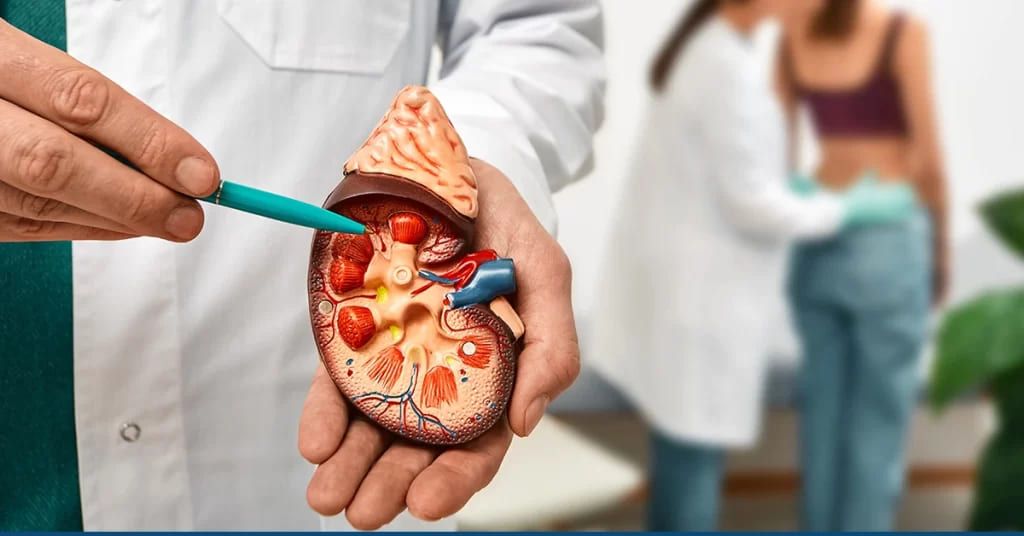 Health & Wellness
Health & WellnessReasons of the Appearance of the of Kidney Stones
Kidney stones (or renal calculi) are hard deposits of minerals and salts that develop in the kidneys. They can be stunningly painful, especially if they go downstream in the urinary tract. Causes of kidney stonesis associated with various factors such as the dietary habits, lack of water and medical preference to genetic reason.1.DehydrationInsufficient fluid intake is the most common cause of the formation of kidney stones. When the body is short on water, urine gets more concentrated, which lets pack minerals and salts together into crystals that form stones. Those at highest risk are people who live in hot climates and those who exert themselves physically without drinking enough water. Proper hydrationdilutes stone-forming constituents in the urine and dehydration is a common modifiable risk factor.2.Dietary FactorsKidney stones are largely developed due to diet. Consuming foods high in oxalates — including spinach, nuts and chocolate — can raise the risk of forming the most common type, calcium oxalate stones. Too much salt (sodium) in your diet is another, as it also causes calcium to leak into the urine, where it causes stone formation. An animal protein-rich diet —red meat, poultry and seafood — can elevate uric acid levels and diminish citrate, a compound that prevents stones. In contrast, a balanced diet with fruits, vegetables and whole grains can lower the risk.3.Medical ConditionsSome health conditionscan put you at risk for kidney stones. For instance, hyperparathyroidism — an excess level of hormone by the parathyroid glands — is associated with elevated calcium in the blood and urine, which in turn, can promote stone development. Other diseases including urinary tract infections (UTI), gout and inflammatory bowel disease (IBD) can also cause kidney stones. Metabolic disorders, such as cystinuria, which causes a large amount of cystine to be excreted in the urine, can also lead to rare stone types.4.Genetic PredispositionA major risk factor for kidney stones is family history. There is also an increased chance of developing stones if a close relative has had them. Some people may have a genetic predisposition to stone-formation as a result of abnormal handling of minerals and salts. Some inherited conditions, such as renal tubular acidosis or primary hyperoxaluria, can directly cause kidney stones.5.Obesity and Lifestyle FactorsYour metabolic disorders lead cause changes in hypotonic body fluids that change crystallization, so you have higher risk of kidney stones. Excess body weight is associated with increased uric acid and calcium in the urine, all of which are factors that can contribute to the formation of stones. Lifestyle-related factors such as a lack of physical activity and unhealthy eating patterns commonly aligned with obesity only deepen that issue. Following regular exercise and healthy food can lower that risk considerably.6.Medications and SupplementsSome medications and supplements can elevate your risk of kidney stones. For example, excessive calcium or vitamin D supplements can result in high urine calcium. Diuretics — drugs often prescribed to people with high blood pressure — can lead to dehydration, which raises risk for stone formation.Likewise, antacids that contain calcium can lead to the same problem in higher doses. Reduces risks by taking medication and other supplements in consultation with a doctor7.Urinary Tract AbnormalitiesStructural issues in the urinary tract, including narrow ureters or kidney cysts, can restrict the flow of urine and promote stone formation. Urine that stagnates makes it more likely for minerals and salts to crystallize and develop stones. Congenital conditions or prior surgeries that involve the urinary tract can also raise risk.In general, kidney stones are a common, often painful disorder caused by multiple factors. Being aware of what these causes are can empower you to take action and lower your risk. Drink enough fluids, eat properly, control disease conditions like diabetes, and lead a healthy lifestyle, all help to prevent kidney stones.If you have a family history or other risk factors, it's essential to consult a healthcare professional for personalized guidance. -
 Health & Wellness
Health & WellnessPreventing Kidney Stones: Effective Strategies for a Healthier Life
Kidney stones are a common painful condition that can be experienced by anyone. These solid deposits of minerals and salts can form in the kidneys, causing agonizing pain as they move through the urinary tract. While some people are genetically more prediscovered to grow kidney stones, there are several things that we can do to help prevent these from forming in the first place. Making some lifestyle changes and simply being cautious of dietary practices can greatly reduce your chances of developing this painful condition.1.Stay Well-hydratedThe best way to try to prevent kidney stones is to keep hydrated. Staying well hydrated by drinking adequate water during the day helps to dilute materials that create stones in the urine.Minerals and salts are less likely to crystalize and form stones when urine is dilute. Their reason behind this is that the normal, reliable advice says that you ought to be drinking 8–10 glasses, or 2–3 liters, of water a day, but whose to say what this refers to when there are so many factors in your environment, level of activity, health conditions, etc. That will determine how hydrated you need to be. Those with a history of kidney stones are often advised to drink enough water to produce around 2.5 liters of urine per day. Water remains the best, but other fluids (like herbal teas and citrus-based drinks) can help with hydration, and possible prevention, in some cases, because citrate (found in citrus-based drinks) can help reduce formation of stones.2.Balanced DietDiet is also an important part of preventing kidney stones. A diet that is low in salt and animal protein may help prevent stone formation. Excessive sodium intake can raise the amount of calcium in the urine, a major component of many kidney stones. So it’s important to limit processed foods, canned soups and salty snacks. Moreover, decreased animal proteins (e.g red meat, poultry/eggs) consumption will help to decrease the urinary levels of uric acid(another contributor to stone formation). We can certainly reduce our intake of animal proteins, and replace with more plant-based proteins, like beans, lentils, and tofu.3.Get Enough CalciumCalcium is also misunderstood with regard to kidney stones. Although calcium is a component of many stones, avoiding calcium is not the answer. In fact, consuming adequate calcium through fooddairy products or fortified plant-based options — can help prevent stones. That’s because calcium attaches to oxalate in the intestines, where it prevents oxalate from entering the bloodstream and being filtered out through the urine, where it can lead to stone formation. But speaking of extra calcium, it is also one of the minerals which shouldn't be taken in excess as it increases stone risk.4.Take in Oxalate-rich FoodsAnother food-related factor is the consumption of foods high in oxalate.Foods that are high in oxalate contain a compound that can combine with calcium in the urine to make calcium oxalate stones — the most common type of kidney stones. Spinach, rhubarb, beets, nuts and chocolate are all high oxalate. That doesn’t mean you have to completely ban these foods, but moderation, as well as balancing these foods with calcium-rich foods, may help in stone formation.So in summary, the avoidance of food that would cause kidney stones, drinking lots of fluid and maintaining a healthy life style solves the puzzle of staying away from kidney stones. Well, here you can really reduce your risk of this painful condition as long as you drink enough water, reduce salt and animal proteins, take enough calcium, control oxalate-rich foods and weight. Though none of these approaches guarantee immunity from kidney disease, they help support these important organs while improving your quality of life. So if you’re prone to kidney stones (or at higher risk), always check with your doctor directly for more tailored advice. -
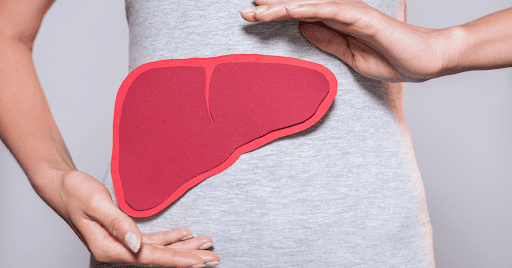 Health & Wellness
Health & WellnessManifestations of Liver Damage
Liver is one of the most important organ of us, it plays an essential role in detoxification, metabolism and nutrition storing. Due to the continuous and constant liver malfunction, it will lead to severe disease. Therefore, knowing the symptoms of the liver damage ahead of time is super important, so that you can get to be cured as soon as possible. Here are some early symptoms that you ought to know about liver damage.1.Fatigue and WeaknessFatigue and reduced strength is a common sign of liver damage. The liverisalso involved inenergy metabolism, turning nutrients into glucose the body metabolizes for energy. Without a well-functioning liver, this cycle is disrupted and manifests as chronic fatigue.Also, aslower detoxified liver will fill up the blood with toxins that, in turn, can lead to fatigue.2.Abdominal Pain and SwellingLiver damage can feel likediscomfort or pain in the upper right quadrant of the abdomen (where the liver is located). Depending on the level of injury, this pain would be consistent and dull orsudden and sporadic. In more severe instances, such ascirrhosis, the liver may enlarge and the abdominal area may become distended. Liver damage can also cause fluid to build up in the abdomen, a condition called ascites, making the belly swell,often painfully.3.Digestive IssuesLiver plays a vital role in digesting the fat, it will produce a kind of material which is called bile. When the production of bile decreases because of your liver damage, it will lead to the issues of digestion, such as nausea, vomiting and have no interests to eat and drink. Patients can also go through the hard times such as diarrhea or constipation, because the ability and capability of liver’s digestion in nutrients can be affected dramatically. Sometimes, an aversion to fatty foods will develop, because the body is not able to digest thesefoods well.4.Skin ChangesLiver damage can present other skin-related symptoms along with jaundice. Itchy skin (pruritus) is a prevalent issue, generally caused by the accumulation of bile salts in the circulation when the liver fails. Increased levels of estrogen can induce skin changes, such as a spider angioma which is a small red blood vessel that can be found on the skin – often on the face, chest and or arms.These are caused by heightened levels of estrogen, which the liver typically helps control.5.Bruising and BleedingWe need protein to form a blood clot and proteins are produced in the liver. The liver produces these proteins; when damaged, it produces less of them, which increases its tendency to bruise or bleed easily. Patients may observe such symptoms as frequent nose bleeds, bleeding from the gums and prolonged bleeding from small cuts. In extreme cases it can cause bleeding inside the body, which can be fatal.6.Cognitive Confusion (Hepatic Encephalopathy)From damaging the liver, which in turn can cause toxins, particularly ammonia, that the liver normally filters out, to build up in the blood. Hepatic encephalopathy is a cognitive impairment caused when these toxins reach the brain. Symptoms can include anything from mild confusion and trouble concentrating to severe disorientation and memory loss, and sometimes coma. This is more common in advanced liver disease (e.g, cirrhosis).In brief, there are a lot of manifestations when your liver is damaged, you need to find out these symptoms as soon as possible in order to get proper treatment . And if you have realized some of the symptoms mentioned above, you’d better go to see a doctor. As a matter of fact, the change of your living habits, the usage of right medicines and the necessary operations can cure your liver damage. If you keep healthy diets and do regular exercise, you can avoid liver damage of course.
Trending Articles
-
 Health & Wellness
Health & WellnessTaking a Mississippi River Cruise: An Unforgettable Experience
The Mississippi River can be said to be a living history book, reflecting the story of America — its past, present and future — and to cruise on it is to know American culture as well. From its headwaters in Minnesota to its mouth at the Gulf of Mexico, this serpentine river is more than 2,348 miles long and, with its many tributaries, provides the ultimate scenic and culturally rich road trip. But before you set sail, here are a few things that will make your cruise experience unforgettable.1.Get Familiar with the Itinerary and Call PortsMississippi river cruises have a variety of routes, withdifferent itineraries covering a range of interests. Some cruises sail the entire length of the river; others are tailored to specific sections, such as the Upper Mississippi, the Mississippi Delta or the picturesque St. Louis to Memphis stretch. Learn about the port itinerary, each port of call can provide different ports of calls. From dynamic city lights in Memphis to tranquil lands of the Upper Mississippi Valley, each port provides a unique experience of the region's culture and lifestyle.2.Choose the Right Cruise ShipMany cruise lines operate on the Mississippi, each with its own ships, amenitiesand vibe. Considerthe ship's size, cabin options, dining and entertainment optionson board, for example. Bigger ships might offer more opulent amenities and wider decks for magnificent river views, but small vessels can provide a more intimate and personalized experience. Look up the reputation of the cruise line and check reviews so that you will choose a ship that matches your style.3.Plan Your SeasonDeciding on the best time to take a Mississippi River cruise mainly comes down to the type of weather andseasonal activities you want to enjoy. Spring and fall feature moderately ideal temps and fewer crowds, so it'syour best bet for a relaxed cruise. Summer means warmer weather and more celebratory vibes, making it ideal for outdoor activities and music festivals. Winter cruises, though less common, can deliver a wonderfully peaceful and off-season experience, though you'll have to gear up for cold-weather conditions.4.Pack SmartWhen packing, keep in mind that you'll be traversing both land and sea. Pack clothes that you can layer for changing weather and comfortable walking shoes for port excursions. For warmer seasons, don't forget sunscreen, hatsand insect repellent. Pack a reusable water bottle — it's important to keep hydrated during excursions on a cruise.5.Embrace the Local CultureThe Mississippi River is sewn into the fabric of American history and culture. From Delta blues music to Civil War history along the way, every port is a trove of stories and traditions. Chances are, you will have the chance to take part in local tours, see cultural performances and try regional cuisine. Your cruise experience will be made brighter with some local culture time, and the memories will remain for forever.6.Be Aware of RiverConditionsAlthough the Mississippi River is navigable in general, conditions on the river vary, particularly in times of heavy rain or drought. Stay updated on weather predictions and river heights to make sure your cruise is on schedule. Cruise lines usually watch these conditions closely and will change itineraries as necessary to ensure safety.To sum it up, a Mississippi River cruise is a one of a kind way to see the heartland of America. Knowing the route, selecting the right vessel, planning your season, packing appropriately, exploring local culture and remaining aware of river conditions will contribute to a fulfilling cruise experience. Well, hoist your sails upon the grand ole river wee the mighty Mississippi and let the warm waters cadge you up on a course of rediscovery and delight. -
 Health & Wellness
Health & WellnessSteps to Get Discounted Airfares for Seniors
Regardless of age, traveling is something that many people love and for seniors, it can often open up new territory to explore, revisit their favorite place, or get the opportunity to see the world at a relaxed pace. But sometimes the cost of airfare becomes an obstacle to those travel dreams. Luckily, there are plenty of methods seniors can take advantage of to save money on airfares, so their travels can be enjoyablewhile still being easy on the wallet. Here are very useful tips toenable you save more from your next flight.1.Become a Member of AARP and Other GroupsJoining associations, for example, AARP (American Association of Retired Persons) is one of thesimplest ways for seniors to receive concessions. There are a number of travel benefits with AARP, including exclusive airfare offers made possible through partnerships with airlines.A nominal fee typically comes with membership, but the savings on flights morethan offsets the expense. Watch AARP’s travel page for flashsales and otherseniors-only offers.2.Use Airline LoyaltyProgramsMost airlines have loyalty programs that compensate frequent flying travelerswith points, miles,or cash discounts. As a senior, joining these programs and earning points from some occasional trips can help one save a good amount of money overtime. Some airlines also havespecial senior discounts, so it’s worth reviewing the fine print of your favorite carrier’s loyalty program forage-specific advantages.3.Book at the Right TimeAirfare is allabout timing. In general the best fares become available middle of the week (Tues or Weds) and several months ahead oftravel. During thesetimes, airlines often release promotional fares that seniors can capitalize on. Do not book during busy travel periods orholidays when rates can be sky high. Being flexible with your travel dates can alsounlock cheaper options.4.Use Travel Agencies, Websites that Specializein Senior DiscountsThere are plenty of travel agents and online sites which caterspecifically to offering seniors discounted prices. SeniorDiscounts.comand similar web sites have a great deal of information.Travelzoocan be excellent resources for deals. These platforms pull offers from different airlines,by doing this you can compare prices and choose the fittest option without going through many different airline pages.5.ExploreAlternativeAirlines and RoutesBudget airlinesand smaller carriers often aren't the first choice, but often offer the best value for money. Donot ignore these options if they service your destination.And, comparing other airports or layover pathscan yield huge savings as well. Occasionally a slightly lengthier trip can yielda considerably cheaper fare.6.Get a Dealand Ask for DiscountsFeel freeto contact airlines directly and ask about other possible senior discounts. Some airlines advertise their senior rates front and center, but others may have them available only on request. Be courteous and persistent; a single phone call might getyou a substantial discount that’s notmentioned in plain view.7.Utilize Companion FaresSenior travelers can find low-cost tickets by keying in specific keywords (such as oneof the benefits airline offer—companion tickets) in the airline website's search bar. If you are eligible for a companion fare, the price of your trip can effectively be cut inhalf. Look for such promotions that cango a long way in working wonder.To sum up, although airfare can discourage travel, older adults have a number of options to try to getreduced rates. With all above mentioned ways and methods such as understands joining the right organizations loyalty programs, closet brochure booking, travel-new-specialty-organizations, alternativetrips, negotiating, partnerships for two mates, you can get discounted airfares for seniors. -
 Health & Wellness
Health & WellnessPlanning a Family Vacation: A Guide to Creating Lasting Memories
Planning a family trip can be fun but also overwhelming. It's a chance to make lasting memories, enrich relationships and break away from the daily grind. But designing a trip thatmeets everyone's interests and needs require a lot of planning and consideration. Whether you envision a beach getaway, a cultural adventure or an outdoor retreat, here's a complete guide to planning a family vacation everyone will love.1.Plan Your Trip TogetherGet everyone involved in the first step of planning a successful family vacation by working together to makethe right decision. Gather as a family and discuss possible destinations,activities and budgets. Give each family member an opportunity to express what they would like to experience on the trip. Young kids maybe thrilled about theme parks, teens boom out on adventurous stuff like hiking or water sports. Parents may emphasize relaxation or exploring cultural sights. Getting everyone's input helps you to plan a vacation that will satisfy all ages and interests.2.Select theIdeal DestinationPicking the right destination makes up a large part of anyfamily trip. Take into account things like how long it will take to get out there, the weather, and whether there are activities to do out there a family would like to have. If you're traveling with younger kids, you may want the place to be fast and easy to reach, with plenty to see and do for kids. For those with teens, maybe a place with adventure but also time out is best. Popular places for family vacations include beach resorts, national parks and cities with rich cultural and historical experiences.3.Plan Activities Everyone Will Be Involved inAperfect family vacation walks the fine line of fun and relaxation. Once you have selected a destination, research activities and sights thatareinterest-specific. To illustrate, a beach trip may have swimming, sandcastle construction, and beach volleyball. When you travel to a city, you might visit museums, local markets, and live performances. Make sure you schedule some downtime so people can feel refreshed and energized.4.Prepare for the UnexpectedEven with all the planning in the world, problems can arise on a family vacation when you least expect it. Flight delays, bad weather, and even minor illnesses can derail your plans, so you're going to want to be prepared. Have a fallback plan for activities if bad weather arrives, and pack a mini emergency kit with band-aids, pain relievers and a portable phone charger. Flexibility and a good attitude are everything when things don't go as planned. The idea being quality time together as a family.5.Record the MomentsThis is why a family trip is the perfect opportunity to make lasting memories. We used a camera to snap pictures and videos of our travels. Be sure to write things down in a travel journal or scrapbook there will be souvenirs to help jog your memory of the fun time you had and you can have fun together when you were traveling.6.Reflect and ReconnectSpend some time after the vacation discussing as a family about the experience. Tell about your highlights and whatyou learned from the trip. Take this time to strengthen family ties. To the contrary, planning a family trip — and having fun on one — can hit both those notes and leave you with memories you'll cherish for a lifetime.To sum up, organizing a family holiday takes a lot of time and effort, but the best part about it is really worth it. Involve everyone in the planning process, create a budget,pick a suitable destination and be ready for the unexpected, to ensure a fun and memorable trip for the whole family. Go ahead and plan and pack your family adventure today and prepareto create lasting memories.
Featured Articles
-
 Travel
TravelUnlocking Heaven: Your Guide to Finding the Perfect Kauai Vacation Package
-
 Travel
TravelNavigating the Skies: Essential Considerations for Private Jet Charter to The Bahamas
-
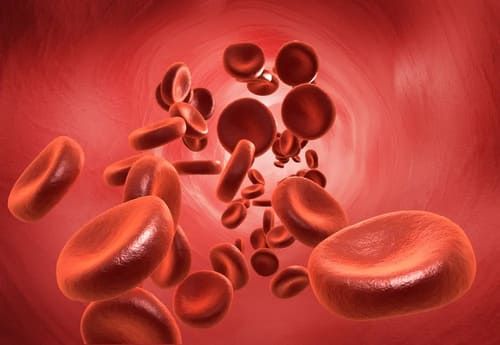 Health & Wellness
Health & WellnessHemophilia: The Royal Disease and Modern Management
-
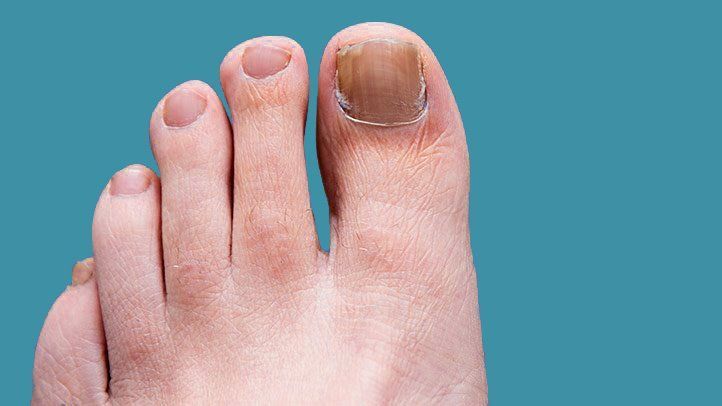 Health & Wellness
Health & WellnessConquering the Fungus: A Guide to Effective Toenail Treatment
-
 Home & Garden
Home & GardenKey Considerations for a Seamless Kitchen Appliance Upgrade
-
 Home & Garden
Home & GardenA Smart Shopper's Guide to Clearance Refrigerator Sales
-
 Automotive
AutomotiveThe Modern Pickup: A Buyer's Guide to Finding Your Perfect Match
-
 Automotive
AutomotiveFinding the Perfect Fit: A Guide to Choosing the Best Tires for Your SUV



